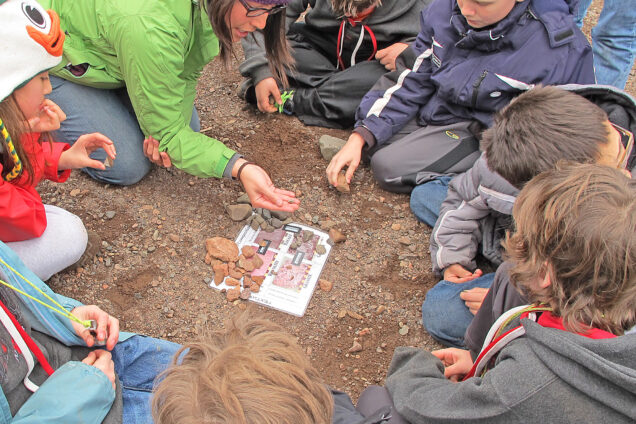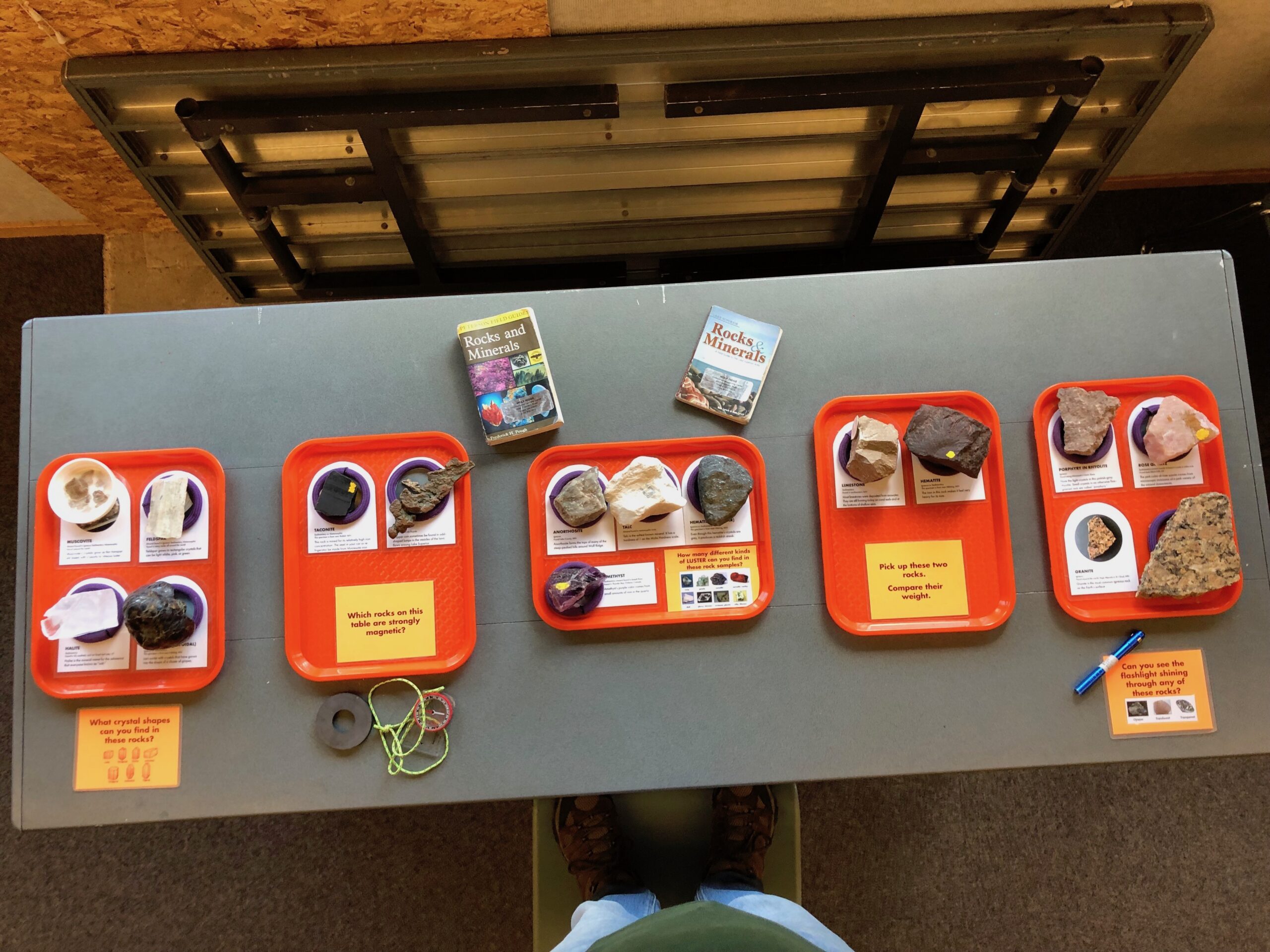Class Details
3 Hours
4th Grade to Adult
hard

How do rocks influence landscapes?
Students will investigate how local and regional landscapes are affected by properties of underlying bedrock. During the first part of class, they search for and examine local rocks and minerals, determine their properties using geologic tools, and learn the common rocks of the north shore. The geological history of Minnesota is told through the lens of plate tectonics, the rock cycle, rock specimens in our geology museum, and features on geologic maps. During a hike to Marshall Mountain, the class compares the patterns seen in the landscaper to a map of local bedrock types as they discover the geologic history of the north shore and Lake Superior.
Concepts
- Noticing patterns helps us organize our thoughts and ask scientific questions about why and how patterns occur.
- Rocks are earth materials that vary in composition and change over time.
- The properties and characteristics of rocks give us clues about the materials they are made of and the conditions under which they were formed.
- The composition, shapes, and relationship of landforms to surrounding rock give us clues about how they were formed.
Outcomes
- Describe properties of a rock using geologic terms.
- Interpret how rock can change between igneous, metamorphic, and sedimentary.
- Identify the common rocks found around Wolf Ridge and along the north shore of Lake Superior.
- Interpret the roles of the Midcontinental Rift and glacial activity in creating the landscapes surrounding Wolf Ridge.

